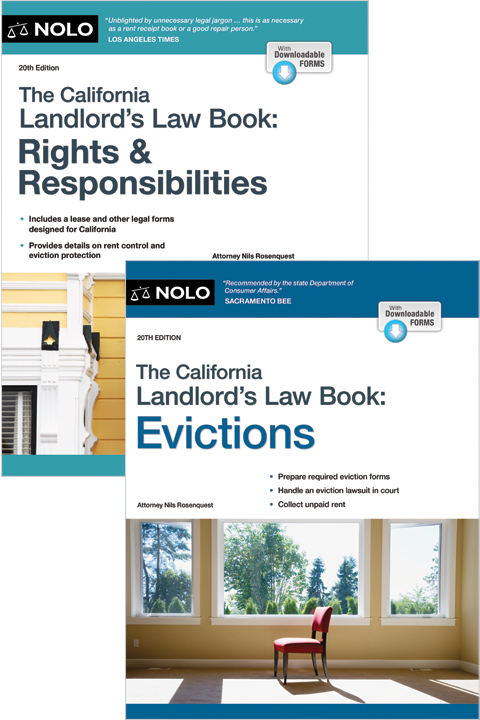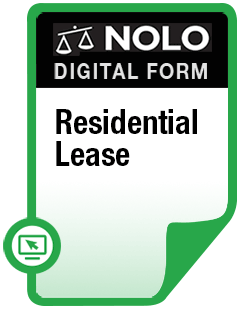Landlords must provide tenants with a safe and livable rental home.
Every state's laws entitle tenants to a safe and livable housing, regardless of how much rent the tenant pays. Livable housing means that the rental meets basic requirements, such as:
- a roof that keeps out rain and snow
- sufficient hot water
- reliable heat
- sturdy floors and walls that aren't in danger of imminent collapse
- no significant danger from environmental hazards such as lead, asbestos, and mold, and
- reasonable protection from criminal intrusion.
The technical legal term for a tenant's right to a livable rental is the "implied warranty of habitability." The term comes from the idea that landlords promise tenants a livable place simply by offering the property for rent—the promise does not have to be written in a lease or otherwise formally agreed upon.
The Implied Warranty of Habitability
All states recognize the implied warranty of habitability, either by decision from their highest court or by statute. (In 2021, Arkansas, the final hold out, adopted a weak form of the implied warranty of habitability described as "implied residential quality standards.")
So what does it mean to say that landlords must provide habitable rentals? Some laws lay out specific requirements, while others leave it up to interpretation. In most places, landlords are responsible for:
- keeping basic structural elements of the building, including floors, stairs, walls, and roofs, safe and intact
- maintaining all common areas, such as hallways and stairways, in a safe and clean condition
- keeping electrical, plumbing, sanitary, heating, ventilating, and air-conditioning systems and elevators operating safely
- supplying cold and hot water and heat in reasonable amounts at reasonable times
- keeping known environmental hazards such as lead paint dust and asbestos from posing a significant danger
- taking reasonable measures to prevent foreseeable criminal intrusions, and
- exterminating rodents and other vermin.
A Tenant's Right to a Livable Place Is Not Waivable
The right of a tenant to force a landlord to maintain a livable rental is not waivable. For example, landlords cannot shrug off their habitability responsibilities in a "disclaimer" when the tenancy begins. Similarly, courts won't uphold any agreements between landlords and tenants to waive the warranty (when a landlord offers lower rent in exchange for a tenant's waiver, for example).
How Do You Know When a Landlord Has Breached the Implied Warranty of Habitability?
A landlord breaches the implied warranty of habitability when, because of the landlord's inattention or negligence, a problem arises that would cause a reasonable tenant to be concerned for their health or safety.
Example: The heat is not turning on in a tenant's apartment. It turns out that the problem can be remedied by a $50 furnace part. Even though the problem can be easily and inexpensively fixed, the problem is a major habitability issue because an unheated home is unlivable.
Minor, Cosmetic Damage
Minor or cosmetic damage that does not affect health or safety does not constitute a breach of the implied warranty of habitability. A minor repair can be annoying, limiting, or distasteful (and it can even be expensive to remedy)—but it doesn't seriously endanger the health or safety of a reasonable tenant or make a rental uninhabitable.
Example: The heater in a tenant's apartment clanks loudly every time it turns on—so much so that it wakes the tenant up. To stop the clanking, the landlord would have to replace the entire heating unit. This is not a habitability issue—the heat still works—nor is it considered a major repair, even though it would be expensive to fix.
Often the line between major and minor isn't clear. To better place a problem in the right category, look at the source of the implied warranty—a state statute, a local ordinance, or, in some states, a court decision. Some of these laws might contain specific guidelines (such as a minimum hot water temperature) that must be met under the implied warranty.
Is It a Minor Repair or a Habitability Problem?
It's essential for tenants to correctly classify a repair problem before claiming that the landlord has breached the implied warranty of habitability. Many of the legal steps a tenant can take to force a landlord to deal with a major repair won't work for a minor repair and can land tenants in legal hot water if used improperly.
Following are some concrete examples of the two types of problems. The test for every repair problem is: Does this make the rental unfit to live in? If so, it's major; if not, it's minor.
|
Habitability Problem |
Minor Repair |
|
A roof leak that results in a wall of mildew in the bedroom |
A roof leak that has caused a slight stain in the ceiling plaster in the hallway |
|
A totally broken hot water heater |
A hot water heater that heats to five degrees less than the temperature required by state statute |
|
A furnace that won't turn on |
A furnace that clanks and creaks when the fan runs |
|
A front door that will not lock |
A screen door (in front of a door that locks) with a broken latch |
|
A toilet that won't flush in a one-bathroom rental |
A toilet that flushes poorly in a two-bath unit |
|
A lobby that is filled with tenants' garbage because the landlord has failed to provide trash bins and has not arranged for pick-up |
A lobby that's in need of a good vacuuming and paint job |
|
A broken heater during the winter |
A broken heater in the summer during a warm spell |
|
An apartment rented to a family with young children where there is deteriorating lead paint |
An apartment with faded and dirty latex paint |
Tenant Options When a Landlord Breaches the Implied Warranty of Habitability
When landlords refuse to provide livable housing that meets minimum requirements, tenants can take action to enforce the implied warranty of habitability. Although state laws vary, tenants in many states can:
- withhold rent
- pay for repairs themselves and deduct the cost from their rent
- sue the landlord, or
- move out without notice (break the lease) and without liability for future rent.
Tenants should never take any of these self-help remedies against their landlord without first checking to see if the actions are legal where they live. That's because if a tenant withholds rent, for example, in an area where this is not a recognized tenant remedy, the landlord could terminate the tenancy—and ultimately evict the tenant—for breaching the lease's requirement to pay rent. Your state's rules are listed in Nolo's chart State Laws on Rent Withholding and Repair and Deduct Remedies.
Talk to a Lawyer
Need a lawyer? Start here.
How it Works
- Briefly tell us about your case
- Provide your contact information
- Choose attorneys to contact you
- Briefly tell us about your case
- Provide your contact information
- Choose attorneys to contact you



